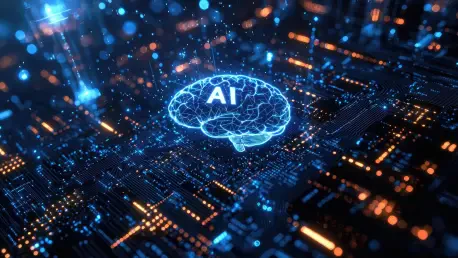I’m thrilled to sit down with Anand Naidu, a seasoned development expert with a mastery of both frontend and backend technologies. With his deep understanding of various coding languages and a keen eye on the evolving landscape of artificial intelligence, Anand offers invaluable insights into how generative AI is reshaping enterprise solutions. In this conversation, we dive into the fundamentals of generative AI, explore its inner workings, discuss its practical applications in business, and tackle the challenges and ethical considerations that come with its adoption.
How would you describe generative AI to someone who’s just hearing about it for the first time?
Generative AI is a branch of artificial intelligence that focuses on creating new content, whether it’s text, images, audio, or video. It learns patterns from huge amounts of existing data and uses those patterns to generate something original. Think of it like a super-smart artist or writer that can whip up a story, design a picture, or even write code based on what it’s been trained on. It’s behind things like chatbots that sound human or tools that can create realistic artwork from a simple description.
What sets generative AI apart from other types of AI you’ve worked with?
Unlike other AI types, such as discriminative AI which focuses on classifying or distinguishing between inputs—like identifying if a photo shows a cat or a dog—generative AI is all about creation. It doesn’t just analyze; it produces. For instance, it can take a prompt like ‘write a poem about a sunset’ and craft something unique, pulling from the patterns it learned during training, rather than just pulling up an existing poem. That creative ability is what makes it so different and exciting.
Can you break down the core idea behind how generative AI actually creates content?
At its heart, generative AI relies on models that predict what comes next in a sequence. It’s often built on something called a transformer architecture, which is great at understanding relationships between pieces of data—like words in a sentence. During training, the model looks at tons of data, guesses what should come next, checks if it’s right, and adjusts itself over billions of examples. Once trained, it uses those learned patterns to generate new content by predicting and stringing together elements in a way that feels coherent and natural.
What role do foundation models play in the world of generative AI, and why are they such a big deal?
Foundation models are like the heavy lifters of generative AI. They’re large-scale models trained on incredibly diverse datasets—think text, images, or even code—so they have a broad understanding of patterns across many domains. What makes them a game-changer is their versatility. You can take a foundation model and adapt it for specific tasks, like customer support or writing software, without starting from scratch. This saves time and resources, making AI more accessible for businesses to implement in practical ways.
How are businesses leveraging generative AI today in their day-to-day operations?
Businesses are using generative AI in all sorts of innovative ways. For content creation, it’s drafting marketing copy, social media posts, or even full articles. In customer support, AI-powered chatbots handle inquiries with human-like responses, freeing up staff for complex issues. It’s also huge in software development—helping write, debug, and optimize code. Beyond that, some companies use it for analytics, generating reports or insights from raw data, which streamlines decision-making processes across industries.
What’s one specific example of generative AI making a difference in coding that stands out to you?
One area I find fascinating is how generative AI assists with code generation. For instance, developers can describe what they want—like ‘build a function to sort a list in Python’—and the AI will produce usable code snippets. It’s not just about writing the code; it can suggest improvements or catch errors before they become problems. This has become a massive productivity booster, especially for complex projects where developers might spend hours on repetitive tasks that AI can handle in seconds.
What should businesses keep in mind before jumping into implementing generative AI solutions?
First, businesses need a clear strategy—knowing exactly what problem they’re solving with AI. It’s not a magic fix; it requires planning. They should consider data privacy, especially if using third-party tools, as sensitive information could be exposed. Then there’s the choice between using an external API, an open-source model, or building something custom—each has trade-offs in cost, control, and setup time. Finally, having humans in the loop to review AI outputs is critical to catch errors or biases before they impact operations.
What challenges or limitations of generative AI do you think businesses need to be most aware of?
One big challenge is what we call hallucinations—where the AI generates output that sounds confident but is actually incorrect. Since it’s based on prediction, not true understanding, it can invent facts or write flawed code. There’s also the risk of data leakage if sensitive info gets into the model and is reproduced. Plus, there are ethical concerns, like copyright issues with training data or overblown expectations of instant productivity gains. Businesses need strong oversight and guardrails to manage these risks effectively.
How do you see the future of generative AI evolving in the enterprise space over the next few years?
I think we’ll see generative AI become even more integrated into everyday business tools, powering smarter automation and decision-making. Agentic AI, where systems don’t just respond but plan and execute tasks, will likely grow, handling complex workflows in areas like IT operations or customer service. At the same time, I expect better governance frameworks to emerge, addressing privacy and ethical concerns. The focus will shift toward making AI more reliable and tailored, amplifying human work rather than replacing it. What’s your forecast for how generative AI will shape enterprise technology?









